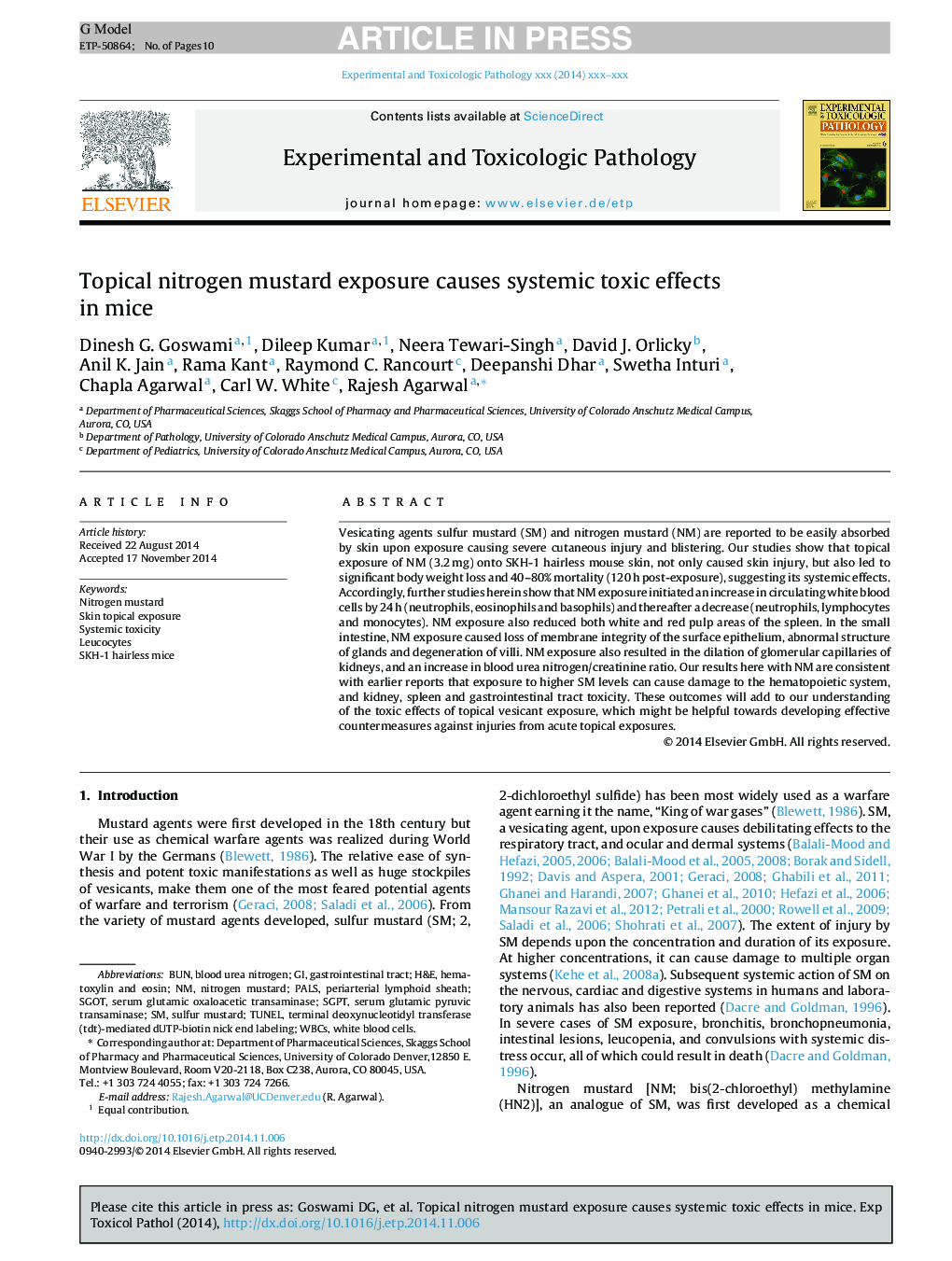| Article ID | Journal | Published Year | Pages | File Type |
|---|---|---|---|---|
| 5817054 | Experimental and Toxicologic Pathology | 2015 | 10 Pages |
Abstract
Vesicating agents sulfur mustard (SM) and nitrogen mustard (NM) are reported to be easily absorbed by skin upon exposure causing severe cutaneous injury and blistering. Our studies show that topical exposure of NM (3.2Â mg) onto SKH-1 hairless mouse skin, not only caused skin injury, but also led to significant body weight loss and 40-80% mortality (120Â h post-exposure), suggesting its systemic effects. Accordingly, further studies herein show that NM exposure initiated an increase in circulating white blood cells by 24Â h (neutrophils, eosinophils and basophils) and thereafter a decrease (neutrophils, lymphocytes and monocytes). NM exposure also reduced both white and red pulp areas of the spleen. In the small intestine, NM exposure caused loss of membrane integrity of the surface epithelium, abnormal structure of glands and degeneration of villi. NM exposure also resulted in the dilation of glomerular capillaries of kidneys, and an increase in blood urea nitrogen/creatinine ratio. Our results here with NM are consistent with earlier reports that exposure to higher SM levels can cause damage to the hematopoietic system, and kidney, spleen and gastrointestinal tract toxicity. These outcomes will add to our understanding of the toxic effects of topical vesicant exposure, which might be helpful towards developing effective countermeasures against injuries from acute topical exposures.
Keywords
Related Topics
Life Sciences
Agricultural and Biological Sciences
Animal Science and Zoology
Authors
Dinesh G. Goswami, Dileep Kumar, Neera Tewari-Singh, David J. Orlicky, Anil K. Jain, Rama Kant, Raymond C. Rancourt, Deepanshi Dhar, Swetha Inturi, Chapla Agarwal, Carl W. White, Rajesh Agarwal,
